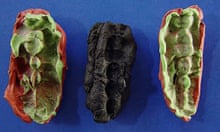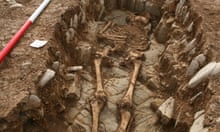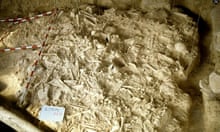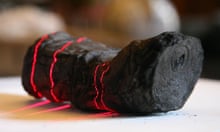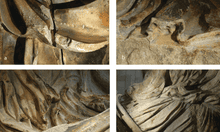Delicate prehistoric carvings of adult red deer, thought to be the oldest of their type in the UK, have been found in a tomb in one of Scotland’s most famous neolithic sites.
The carvings, which depict two male red deer with full-grown antlers and several thought to be young deer, were discovered by chance in Kilmartin Glen in Argyll, home to one of the UK’s richest accumulations of neolithic and bronze age sites.
Archaeologists estimate the carvings are between 4,000 and 5,000 years old, a period which spans the neolithic and early bronze age, and are the first in the UK located alongside prehistoric cup and ring markings found throughout Kilmartin Glen.
The deer were found by Hamish Fenton, an amateur archaeologist from Oxfordshire who was visiting the area, and who was exploring Dunchraigaig cairn, a bronze age burial mound, one evening.
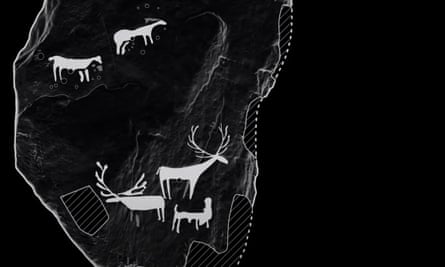
After deciding to explore a burial cist on the side of the cairn, he slid inside with a torch. An archaeology graduate from Bournemouth university, Fenton spotted the delicate and unusual markings on the capstone, or cover, of the chamber.
“As I shone the torch around, I noticed a pattern on the underside of the roof slab which didn’t appear to be natural markings in the rock. I could see that I was looking at a deer stag upside down, and as I continued looking around, more animals appeared on the rock,” he said.
“This was a completely amazing and unexpected find and, to me, discoveries like this are the real treasure of archaeology, helping to reshape our understanding of the past.”
The cairn has been cordoned off to allow further surveys and preservation of the chamber, the site’s owners, Historic Environment Scotland, said on Monday. HES said its rock art project has already made detailed 3D scans and digital models of the carvings to allow the faint markings to be properly seen and studied.
Dr Tertia Barnett, the project’s principal investigator, said these were the first prehistoric animal carvings found in Scotland. Their figurative style also contradicted the assumption that British rock art of this date was mainly geometric.
“While there are a few prehistoric carvings of deer in the UK, the only other ones created in the early bronze age are very schematic. It is remarkable that these carvings in Dunchraigaig cairn show such great anatomical detail and there is no doubt about which animal species they represent,” she said.

